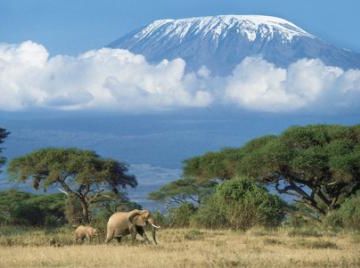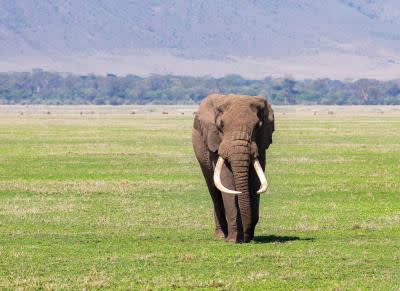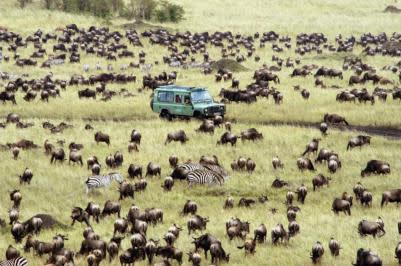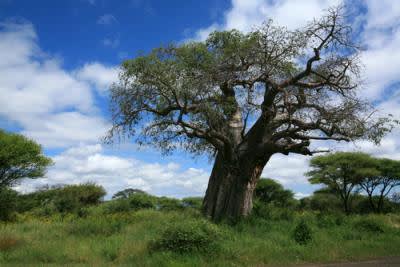
Best National Parks of East Africa | Kenya & Tanzania
Ecotourism – “Responsible travel to natural areas that conserves the environment and improves the well-being of local people”– wasn’t established as a firmly-defined travel philosophy until The International Ecotourism Society was founded in 1990, with International Expeditions as one of the organization’s founding members.
But the core principle of conserving the natural environment and the wildlife that inhabit it for the benefit and enjoyment of the people has been around ever since the establishment of the first national parks in the United States (Mackinac National Park) and Australia (Royal National Park) back in the late 1870s.
It took another 50 years before the creation of Africa’s first national parks – Virunga was established in the Democratic Republic of Congo in 1925, with South Africa’s Kruger National Park designated the following year. But few nature-lovers would argue against the assertion that the continent (particularly East Africa) now boasts many of the most impressive national parks and nature reserves in the world:

AMBOSELI NATIONAL PARK
Originally known as Maasai Amboseli Game Reserve, this 151-square mile ecotourism hotspot in Kenya’s Rift Valley was first set aside for preservation in 1906, established as a national park in 1974, and declared a UNESCO Biosphere Reserve in 1991.
Although primarily known as the best place in the world for viewing free-ranging elephant herds, Amboseli also offers opportunities for cultural interactions with the indigenous Maasai people, extraordinary views of Mount Kilimanjaro, and a vast array of wildlife ranging from the “Big 5” mammals to over 400 species of birds.
Located 150 miles southeast of Nairobi, Amboseli is Kenya’s second most popular national park, attracting around 120,000 visitors annually.

MAASAI MARA NATIONAL RESERVE
A “bucket list” dream for practically every traveler with a passion for wildlife, the Maasai Mara is part of the massive Serengeti ecosystem, which covers approximately 12,000 square miles in northern Tanzania and southwestern Kenya.
The Maasai Mara is a prime destination for witnessing the annual Great Migration, which is widely considered among the world’s Top 10 Natural Wonders. Every year millions of gazelles, wildebeest and zebras make the arduous 500-mile trek northwest to Kenya in search of water and fresh grass. The famous crossing at the Mara River, where hungry crocodiles lie in wait, is unlike any other safari spectacle you’re likely to see.
Of course the Mara also offers numerous attractions at other times of the year, including lions, leopards, cheetahs, elephants, buffalo, hyenas, and more than 470 species of birds.

NGORONGORO CONSERVATION AREA
Based on fossil evidence found at the nearby Olduvai Gorge, where Louis and Mary Leakey began their famous archaeological excavations in 1931, the Ngorongoro area of Tanzania has been inhabited by various hominid species for approximately 3 million years.
Separated from Serengeti National Park in 1959, Ngorongoro became a UNESCO World Heritage Site in 1979. It’s unique because it’s the only conservation area in Tanzania that protects wildlife while allowing human habitation, prohibiting cultivation of the land at all but subsistence levels.
The park’s most famous feature is Ngorongoro Crater, the largest intact, inactive and unfilled volcanic crater in the world. Formed when a volcano exploded and collapsed on itself, the crater is 2,000 feet deep and 100 square miles wide, providing home to more than 25,000 large animals (buffalo, hippos, gazelles, wildebeests, etc.), a dense lion population, and thousands of lesser flamingos flocking to Lake Magadi.

SERENGETI NATIONAL PARK
The Maasai people had been grazing their animals on Tanzania’s vast plains for around 200 years before the first European explorer showed up in 1892. They described the area as siringet, meaning “the place where the land runs on forever.” Although it was made a game reserve in 1921, it didn’t become a national park until 1951.
The Great Migration that ends in the Maasai Mara begins in this 5,700-square mile haven, which is divided into three regions– the grassland of the Serengeti plains, the riverine forest of the Western corridor, and the bushy savannah and open woodlands of the Northern Serengeti.
The park boasts staggering wildlife diversity, from the elephants and giraffes of the north and the Nile crocodiles and colobus monkeys of the western swamps to the huge herds of wildebeest, zebra, gazelle, impala and buffalo that crowd the plains during the wet season. It’s no wonder the UNESCO World Heritage Site is also Tanzania’s #1 tourist attraction.

TARANGIRE NATIONAL PARK
Though significantly less well-known than Serengeti National Park, Tarangire (the sixth largest park in Tanzania at 1,100 square miles) attracts an impressive array of animals thanks to the Tarangire River, which becomes the only source of water for wildlife during the dry season.
The park also has a number of other unique features, including many monolithic Baobab trees, massive termite mounds that often serve as home to dark mongooses, and tree-climbing lions. It’s also a major draw for bird-watchers, as the swamps on Tarangire attract one of the world’s most stunning arrays of breeding birds (over 550 species).
Ready to Experience Africa?
Exodus has years of safari travel tradition, offering distinct small-group safaris and endless customizable private safari options. Start planning your Kenya & Tanzania Safari or private African safari today!
